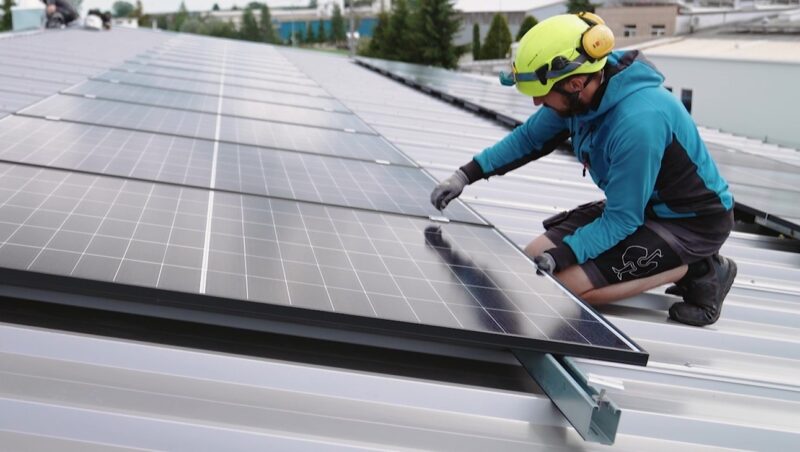Agrophotovoltaics (APV), also called agrovoltaics and Agro-PV or Agri-PV, is an innovative approach that combines agricultural production with solar power generation. It involves installing photovoltaic panels over agricultural crops. Through the use of agro-photovoltaic systems, it is possible to simultaneously use land to grow crops and generate electricity, helping to optimize space, increase energy efficiency and reduce greenhouse gas emissions. What is the current situation of agrophotovoltaics in Poland and what are the benefits? This is what you will learn from further reading of the article.
Agrophotovoltaics – agricultural production and solar energy generation
Agrophotovoltaics, combining emission-free energy production with agricultural production, is widely used on different types of land – it works well on small farms as well as those operating on a large scale. It can be used on field crops, as well as in orchards and plantations, protecting them from excessive radiation (as well as hail or rain), thus ensuring optimal growing conditions. Photovoltaic panels can also be used in animal farms – providing healthy and comfortable shade for animals.
Photovoltaic panels in APV systems – what is agrophotovoltaics?
The structures on which photovoltaic panels are placed reach from 2.1 meters upwards. This allows for the simultaneous preservation of the space necessary for the proper growth of crops (vegetables, fruits, grains or flowers) and the generation of electricity from the sun. Most often, partially transparent panels are used, allowing a certain amount of sunlight to penetrate, which can be crucial for the growth of specific crops.
In addition, mobile structures for PV panels are used – tracking the movement of the sun and optimizing energy production while matching the needs of the plants. Fixed PV panels are mounted at heights that allow plant growth and the passage of agricultural machinery.
Agrophotovoltaics in Poland and around the world – the future of agriculture?
Agrophotovoltaics, as an innovative branch of photovoltaics for agriculture, is still a niche in Poland. However, in the world (and especially in East Asia – China, Japan and Korea), including Europe, it is quite popular. Dynamic development of the sector can now be seen in countries such as Germany, the Netherlands, Spain, France and Italy. In European countries, vineyard owners are also increasingly opting for agrophotovoltaics. Adolf Goetzberger, a pioneer of solar energy, and Armin Zastrow, founder of the Fraunhofer ISE Institute, are considered the prototypes of the thriving technology. Back in the early 1980s, they prepared a system that allowed farmers to install photovoltaic cells on farmland.
As for agrophotovoltaics, in Poland the lack of legal and tax regulations is a major barrier to the development of the sector. PV panels can only be installed on land of the worst classes (IV-VI of mineral origin), which is contrary to the idea of agrophotovoltaics. The area under PV panels should be excluded from agricultural production, which means the farmer will lose direct subsidies. Combining two activities on one land (profiting from agriculture and energy production) means paying higher tax.
The Polish agro-voltaic market is at an early stage of development and is far behind the cited European countries, although, as experts point out, it carries great potential, due to the availability of large areas of agricultural land. Favorable insolation conditions in many regions of the country mean that systems of this kind can effectively combine agricultural production with solar power generation. The first agrophotovoltaic projects are already underway – mainly in the form of research or pilot programs (an example is the cultivation of bear garlic in the Zgorzelec district).
Agrophotovoltaics – benefits of photovoltaics in agriculture
Thanks to agrophotovoltaics, it is feasible to use the same land for food and energy production at the same time, which in turn is an important step towards sustainable development. This carries both environmental (in the form of reduced carbon emissions) and economic (as cheap energy production for farm use) benefits.
The shade cast by the panels can also protect plants and animals, which assumes importance in the context of ongoing climate change, which can expose farmers to losses. Shielding crops and livestock from extreme conditions also improves food security. Diverse microclimatic conditions under the panels can, in turn, promote species diversity. Reducing evaporation through the shade cast by the panels is particularly important in regions with low water availability.




